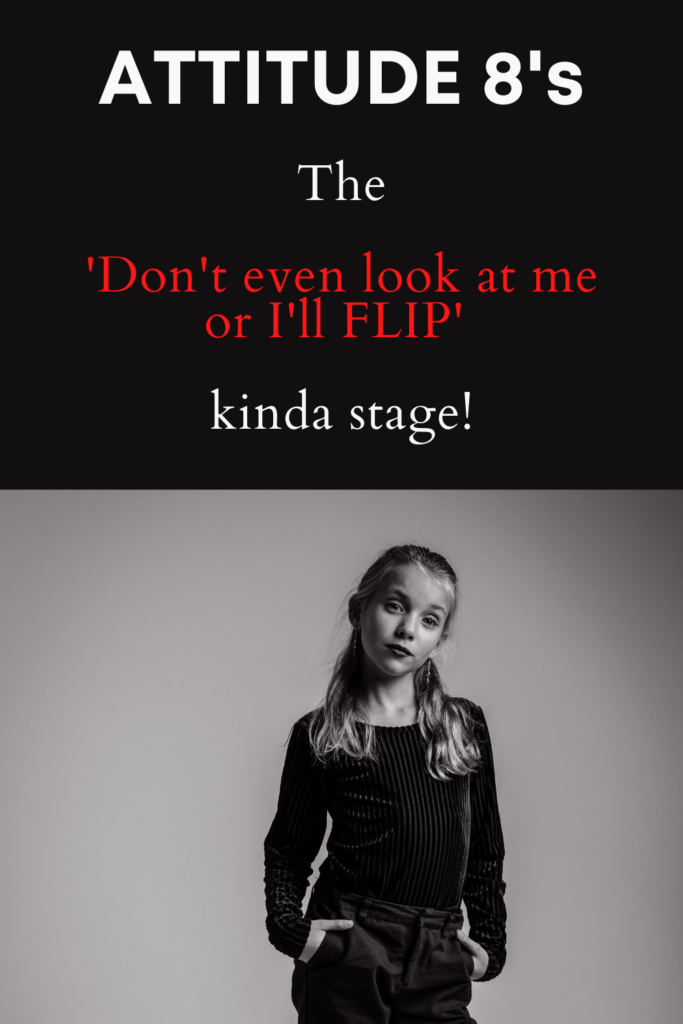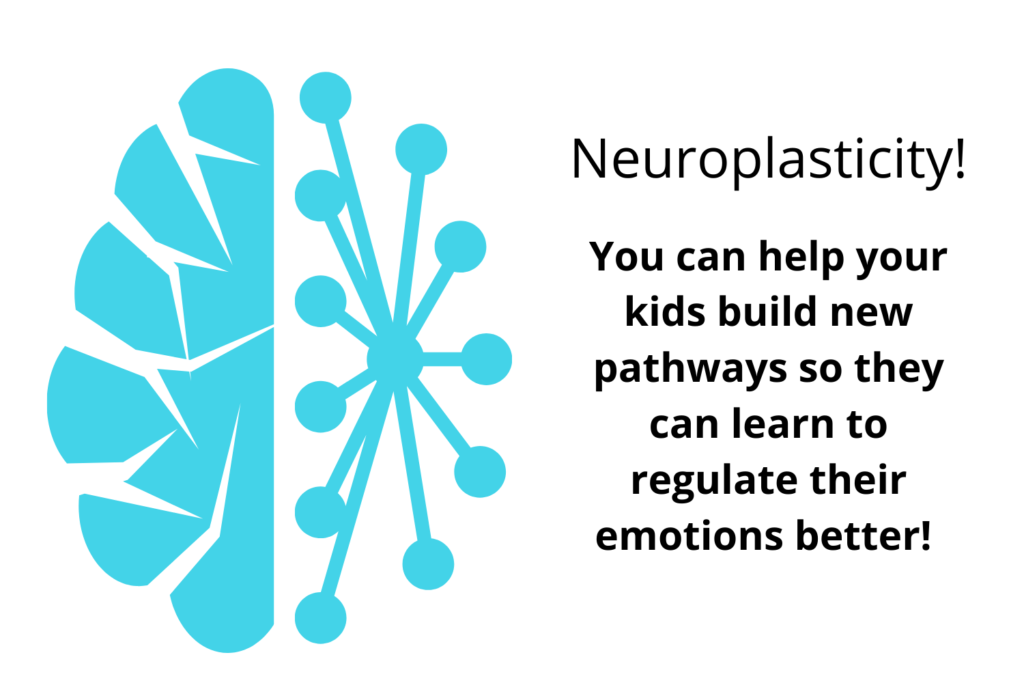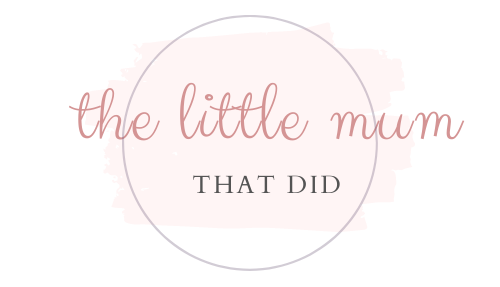When your child throws a tantrum it can be incredibly frustrating and challenging. For both you and your child. Whether your child is in their Terrible Twos, Threenager Threes, Sassy Sixes or Attitude 8’s- their emotions are BIG! So here’s the helpful scientific explanation why- The ‘Need to knows’ and the simple ‘What to do’s’ to get you through whatever stage your child is in.
Our Current Climate: The Attitude 8’s
Everyone always talks about terrible two’s and the threenager 3’s, but no one ever warned me about the ATTITUDE 8’s. And sometimes when things happen that you are not prepared for, they are a little more difficult to handle.

Like my 8 year old for example.
She had always been the easy one. And was the very reason we felt confident to have 2 more kids after her.
And then suddenly, in what felt like an overnight transformation, our easy to reason with, calm and obedient child started slamming doors in waves of frustration, hitting her siblings and constantly resorting to yelling AAAAAATITUDE at us.
It was as if she was starring in her own preview of ‘Diaries of a teenage drama queen.’
One minute she can be the happiest little girl in the world. And just a split second later, every part of her being wants to tear the world down, like a miniature version of Hulk that we spawned and bought into the world.
But there’s no need for her body to turn green.
8 year old Hulks are very obvious in demeanor.
Their eyes turn wild, their bodies stiffen and tremble in anger.
They often lose all control of arms and legs.
And completely lack any ability to hold back from using these or any other object close by, to swing or propel through the air in hope it hits someone or something in its path.
It’s like something completely takes over their whole being and they have no means to bring themselves back down.
As parents we often view tantrums as challenging and respond ineffectively because of our lack of understanding of what is really happening to our child.
It can be extremely frustrating and often infuriating to see your children behave this way. And it’s often easy to resort to throwing that anger straight back at them in order to try to get them to settle down.
It never works and yet we still tend to repeat these behaviours over and over simply because we don’t have the knowledge, understanding or the right tools to use to overcome the situation in more effective ways.
So, what is the Science behind why kids tend to flip their lids so easily?
There is science behind why our children tend to explode more often than we do as adults.
And why the ‘little things’ set them off into wild tantruming ways that are often unexpected and can seem completely out of character sometimes.
But simply knowing the science behind why kids behave the way they do, has really helped us improve our parenting style and keeps us connected to our kids when they experience these moments of BIG emotions and their inner ‘Hulk’ takes over.
THE NEED TO KNOWS
What you need to know when dealing with your children’s BIG HULK?
Need to know # 1: A child’s brain is not yet equipped to deal with such BIG emotions
Children, are literally incapable of handling such big emotions and that is why they resort to tantrums.
Their brains are not developed like an adults brain and they cannot physically process emotions like an adult brain can.
Without getting too technical here, there are 3 main parts to a human brain.
They are the primal brain, the emotional brain and the logical brain.
An adult’s brain has learnt to fire connections between each part of the brain and bring all the parts together to be a fully functional, balanced brain. (Well, most adults).
A child’s brain however, is made up of the same parts that an adult has but lacks the connections that fire between them.
When your kids get upset, it is the primal brain that takes over. Its main function is to protect you and keep you safe and is good at doing things like fighting, running, hitting and yelling.
However, when this part of a child’s brain steps into action, the logical part of the brain shuts down and kids literally become completely incapable of rational thinking.
It is here that we as parents need to step in and help them process these emotions to get those neurons firing and creating new pathways between each section of the brain.
This is called neuroplasticity. Our brains are like plastic and we have the ability to mold them no matter how old we are.

As adults, we have already formed neurological pathways between each part of our brain to help them function together.
But for kids, they need practice and experience to form new pathways that will help them in building a balanced and integrated brain.
Need to know #2: Behaviour is communication.
My particular 8 year old hulk loves to slam doors. In the past, I would cringe every time I could hear my daughter’s door slam in anger. You can always hear the succession of angry steps as she makes her way down the end of the hallway, which is often followed up by a loud boom of the door slamming to her room.
She’s mad again.
And we all know it.
But I don’t feel that anger creeping up inside of me any more.
Because I know now, that fierce slam of the door, is her way of communicating that something isn’t right with her.
That she is mad.
That her hulk has taken over and she doesn’t know how to bring herself back again. It might not be the right way, but for now, that is the only way she knows how to communicate with us in that moment, that she is mad at the world. And everyone in it.
So know that when a child is acting out, what they are actually saying to you is, ‘I need your help.’
Need to know #3: Deep connections are formed when we help our children get through their BIG emotions.
If I were to ask you what you thought was the number one thing that forms strong bonds between parent and child what might you answer?
I imagine the list might include such things as spending time with your child, taking them to the park, teaching them new things, or having regular family dinners together. Certainly these all contribute to the bond you form with your kids.
But what is the most important thing you can do, to secure a deep connection with your kids that lasts?
Research shows that the best time to build deep bonds with your kids, is when they are in the middle of these tough emotional moments.
It all comes down to how we respond when our children are upset. Relationships can be either torn down or built up, depending on how we decide to interact with our kids when they are caught up in big emotions.
So, how WE respond will determine the quality of the relationship we have with our children.
And why is it important to form these deep bonds?
Well, it is proven that children who experience deep bonds with their parents, are more likely to live longer, whine less, have longer attention spans, are more resilient and are more likely to be problem solvers.
Need to know #4: Children need to learn the vocabulary needed to express themselves.
Often kids can’t explain what they are going through and how they are feeling because they haven’t learnt the vocabulary to express this yet.
I can often see physical signs that my children might be distressed before they are able to verbalise what is happening.
Kids can feel a range of emotions every day and not recognise what they are because they haven’t been labelled for them yet and this is why they tend to lash out and physically express themselves before verbalising how they feel first.
What to know #5: How YOU respond to your own BIG emotions is how they learn to do the same.
Equanimity is the state of calmness and composure even in a difficult situation. Do you have it?
You might say the most important ‘need to know’ about the creation of your child’s inner hulk is that …..
YOU are the model for how you want your children to RESPOND to their emotions.
To teach your kids equanimity, you must model it for them first.
And no, I’m not saying that you need to be a perfect parent. Damn straight I’ve yelled and lost my shit in front of my kids in moments of frustration and chaos.
But what my husband and I are consciously trying to achieve EVERYDAY is to model effective responses to even the little things for our kids to see.
Because I know that these things can be learned, exercised and developed.
When your kids are battling BIG emotions and their inner Hulk returns, they can find themselves thinking they are in a state of crisis and will inevitably respond the same way they have observed you doing so.
Want to know the honest truth here?
My 8 year old hulk slams doors because she has seen ME do it!
Yep, I was once a notorious door slammer myself before I realised how detrimental it was to learn how to deal with my own emotional responses to the stress of having 3 children sometimes.
To be honest door slamming for me is a great way to physically vent frustration but it definitely gets you nowhere.
It’s a poor form of communication and I have since learnt better ways to respond to the stress of parenthood.
I know that I’m the one responsible for ultimately teaching my daughter an ineffective way of dealing with angry emotions.
And now it’s up to me to teach her better ways of communicating with us, by modelling better ways of dealing with those emotions myself in front of her first.
What about you?
So think seriously now about how well your kids see you respond to everyday challenges.
Such a simple shift in your everyday behaviours can have an enormous effect on your children and how they learn to deal with their everyday emotions. And inevitably impact how they might go about tackling their own challenging situations.
Realising that anger, resentment and frustration serve nobody is a great first step. Practice awareness when you are interacting with your children.
You alone are responsible for your own responses and reactions. Whether you get annoyed at sitting in traffic, pull the finger in a fit of road rage, comment angrily that the line to the checkout is taking too long or you slam doors when motherhood gets overwhelming.
Remember, they are watching YOU.
And so too will they observe if you smile at strangers, help an old lady in the supermarket, wait patiently at the checkout and not bother reacting to such little occurrences as spilled milk.
And of course it’s ok to make mistakes.
To fail once in a while.
Nobody is perfect and it is great to show them this side of you too.
What is important here, is to show them how you go about responding to those times when you may not have controlled yourself under pressure. Teach them that you too can make mistakes but the important thing is to take lessons out of them.
Now you know the ‘Need to knows’ find out the ‘What to do’s’!
